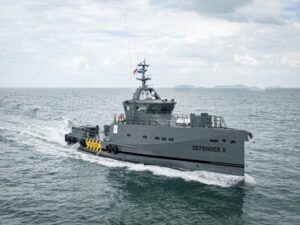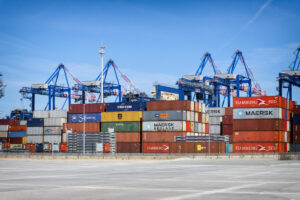The Port of Tyne and Tidalis have introduced an advanced Vessel Traffic Services (VTS) system to enhance the situational awareness of VTS operators and support decision-making.
The newly launched VTS system adheres to the rigorous standards set by the International Association of Marine Aids to Navigation and Lighthouse Authorities (IALA).
This fully compliant system covers the waters of the Port of Tyne in the UK, encompassing an expansive area from 6 nautical miles offshore to 3 nautical miles inland.
It reportedly uses the Automatic Identification System (AIS) to extend coverage over a 7 nautical mile stretch of the river Tyne up to Dunston.
The Port of Tyne features two VTS centers, with the primary centre operating two positions around the clock. In case of an emergency, a backup position is available at a remote location.
The vessel traffic within the Port of Tyne is monitored using two Hensholdt X-band radars and two Saab R60 AIS base stations.
The base stations are fully equipped to handle the next generation of AIS, known as the VHF Data Exchange System (VDES).
READ: Port of Tyne container volumes surge by a fifth in latest results
Two Bosch CCTV cameras provide further vessel details in the area, automatically controlled by radar tracking.
The VTS system offers the foundation for optimising port calls. In addition to safety considerations, the predictability of port operations is becoming increasingly important.
Factors such as a rising population, the need to minimise carbon emissions, and rerouted trade routes demand meticulous planning that begins the moment a vessel leaves the port for its next destination.
The system’s design is service-based, promoting interoperability and allowing ports to develop marine ecosystems.
A technology platform called the Maritime Service Suite offers all these services, designed to extend coverage beyond the sea’s surface.
READ: Port of London Authority upgrades VTS systems
Ivo Tummers, CEO of Tidalis, said: “As an innovation hub for the UK’s port modernisation plan Maritime 2050, Port of Tyne has strong digitalisation ambitions.
“The new VTS and its web-oriented architecture fit seamlessly in a port where all staff have already been given tablets to streamline operations.”
The Port of Tyne obtains access to additional capabilities that are generally only available through professional AIS services, such as communication via AIS mail, by having control over their own AIS base stations.
Another key aspect is the availability of virtual Aids to Navigation (AtoN), which allows VTS operators to dynamically establish restricted zones and virtual warning buoys that appear on ships’ electronic navigation charts.
Dillon Brown, Marine Manager of the Port of Tyne, stated: “For us the new system means that we can operate our port at a higher level than before because we now have a robust traffic view that we know we can rely on.
“What characterises this project are the short communication lines between the Tidalis project team and us. They are very responsive to our needs and observations.”








